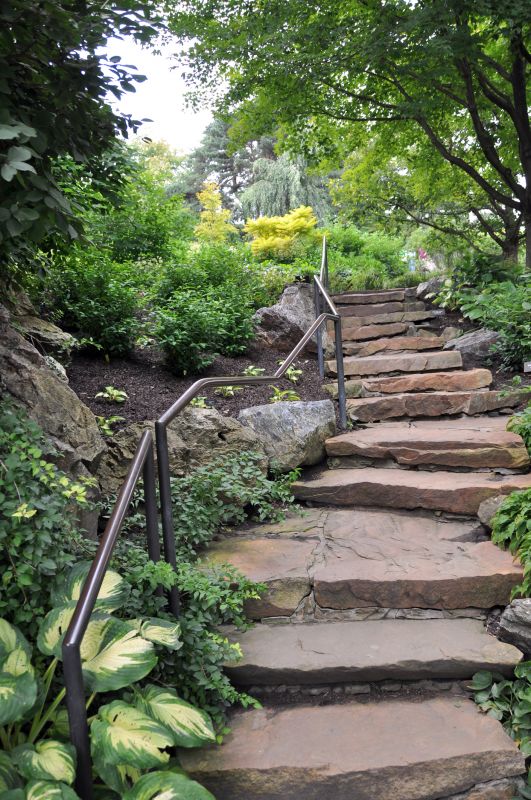Leading Products For Staircase Buildings That Maximize Accessibility and Safety
Identify top-rated products that meet safety standards and enhance accessibility in staircase design for commercial and residential building
 Staircase buildings require a variety of specialized products to ensure safety, functionality, and aesthetic appeal. From structural supports to safety barriers, selecting the right components is essential for both new constructions and renovations. These products not only enhance the stability of staircases but also contribute to the overall design, making them a critical aspect of architectural planning.
Staircase buildings require a variety of specialized products to ensure safety, functionality, and aesthetic appeal. From structural supports to safety barriers, selecting the right components is essential for both new constructions and renovations. These products not only enhance the stability of staircases but also contribute to the overall design, making them a critical aspect of architectural planning.
Top Overall Option
Modular Staircase Support System
A versatile and adaptable support system designed to accommodate various staircase configurations. It offers robust stability, easy installation, and compatibility with different materials, making it suitable for both residential and commercial projects. Its modular design allows for customization to meet specific structural needs, ensuring safety and longevity.
Types of Products For Staircase Buildings
Handrails and Banisters
Support and safety features that provide grip and guidance along staircases, available in various materials and styles.
Stair Treads
The horizontal part of the staircase that bears weight, offered in wood, metal, or composite materials.
Stringers
Structural supports that run along the sides or center of stairs, providing stability to the steps.
Balustrades
Railings supported by balusters that prevent falls and add aesthetic value to staircases.
Non-slip Stair Treads
Safety-enhancing strips or mats that prevent slipping on stair surfaces.
Corner Supports
Reinforcements for staircases with turns or landings to ensure structural integrity.
Lighting Fixtures
Integrated or surface-mounted lighting to improve visibility and safety on stairs.
Landing Platforms
Intermediate flat areas that connect stair sections, often customizable for size and material.
Support Brackets
Mounting hardware that secures stair components to walls or other structures.
Glass Panels
Modern safety barriers that combine transparency with durability for a sleek look.
Structural Anchors
Heavy-duty fasteners used to secure stair components to building frameworks.
Decorative Elements
Ornamental features to enhance the visual appeal of staircase structures.
Protective Handrail Caps
Covers for handrail ends that improve safety and aesthetics.
Acoustic Insulation
Materials designed to reduce noise transmission from staircase movement.
Fire-Resistant Components
Materials and fixtures that enhance safety in case of fire emergencies.
Popular Choices
Commonly used for their durability and ease of maintenance, metal handrails are a popular choice for many staircase designs.
Offering a warm appearance, wooden treads are favored for residential projects and classic interiors.
Modern and sleek, glass balustrades are frequently selected for contemporary buildings to maximize visibility and light.
Affordable safety solutions that are easy to install and replace, helping to prevent slips and falls.
Integrated lighting options that enhance safety and aesthetics, especially in low-light environments.
Heavy-duty support structures used in commercial and industrial staircase applications.
Lightweight and corrosion-resistant, aluminum handrails are suitable for outdoor or high-moisture areas.
Low-maintenance alternatives to wood, available in various textures and finishes.
Flexible hardware that allows for precise fitting and structural adjustments.
Cable-based safety barriers that combine strength with minimal visual obstruction.
Essential for ensuring stability at landings, especially in high-traffic areas.
When considering products for staircase buildings, it is important to evaluate the materials, durability, and compatibility with existing structures. Metal components such as handrails and supports offer strength and longevity, while wood options can add warmth and aesthetic appeal. Additionally, safety features like non-slip treads and protective barriers are vital for preventing accidents.
Installation ease and maintenance requirements are also key factors. Some products are designed for straightforward installation with minimal tools, making them suitable for DIY projects or quick upgrades. Others may require professional installation to ensure compliance with safety standards and building codes. Regular maintenance can prolong the lifespan of these products and maintain their safety features.
Overall, choosing the right products for staircase buildings involves balancing safety, durability, design preferences, and budget considerations. Properly selected components can improve the functionality and appearance of staircases, contributing to safer and more attractive building environments.
Key Buying Considerations
- Material durability and suitability for indoor or outdoor use
- Compatibility with existing staircase design and materials
- Safety features such as non-slip surfaces and sturdy handrails
- Ease of installation and whether professional help is needed
- Maintenance requirements and long-term upkeep
- Compliance with local building codes and safety standards
- Aesthetic appeal and how it complements the overall architecture
- Weight capacity and structural support needs
- Weather resistance if used outdoors
- Budget constraints and cost-effectiveness
- Availability of customization options for size and finish
- Integration with lighting or other safety features
- Ease of cleaning and resistance to wear and tear
- Environmental factors such as exposure to moisture or corrosion
- Warranty and after-sales support
This page contains affiliate links. We may earn a commission if you purchase through these links, which helps support our content creation. We only recommend products based on their suitability and quality for staircase building applications.
